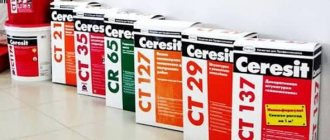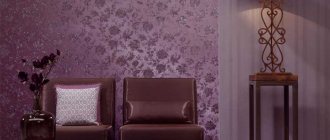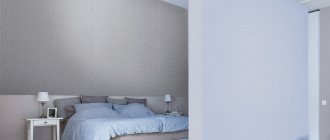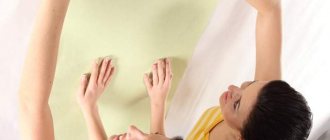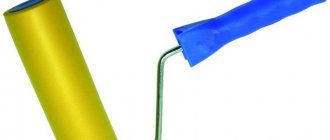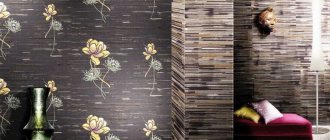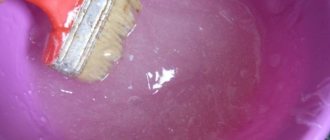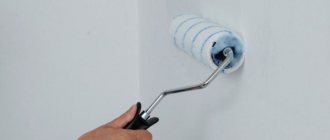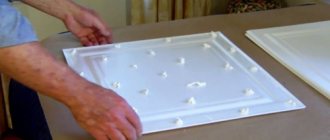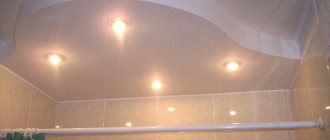The popularity of plasterboard ceilings is explained by proven installation technology and versatility. They are appropriate in any room and are suitable for various types of finishing - from whitewashing to laying tiles. The properties of drywall and installation features require compliance with certain rules when carrying out finishing work, wallpaper is no exception. Let us consider in detail the process of finishing gypsum board ceilings with roll materials.
What wallpaper is best to glue on drywall?
From a technology point of view, the choice of wallpaper for a plasterboard ceiling is not limited in any way and depends only on the taste, preferences and financial capabilities of the home owner.
The criteria for choosing wallpaper are as follows:
- appearance;
- price;
- lifetime;
- practicality;
- application area;
- Convenience when gluing ceilings of complex configurations.
Manufacturers offer a huge variety of wallpaper from different materials. Let's consider the most popular:
- Paper wallpaper . They are attractive due to their low price, variety of designs and color palette. They do not interfere with air exchange and are easy to finish surfaces of any shape. This wallpaper cannot be called practical, the service life of the material does not exceed five years, then the bright colors fade, the canvas rubs around switches, sockets and on external corners, warps and tears due to uneven settlement of buildings, swells in places and becomes moldy in rooms with high humidity.
- Non-woven wallpaper . They are easy to stick to the ceiling, they do not stretch when smoothed, joining the sheets and matching the pattern is much easier than in cases with other materials. Plain wallpaper is glued to a plasterboard ceiling for painting; if desired, it can be easily “refreshed” with a different color and differs from paper in its elasticity and durability.
- Vinyl products . Pleases with decorativeness, wear resistance and water-repellent properties. Washable varieties of this wallpaper are suitable for use in the toilet, bathroom and kitchen. Some can be cleaned with a brush and detergents without fear of spoiling the appearance. They are stronger than paper, have a textured surface, under which it is easy to hide ceiling defects. Such wallpapers are more expensive than paper ones, although there are budget options with modest performance characteristics.
- Glass wallpaper . They are strong and durable, mask surface imperfections, are easy to paint and are moisture resistant. The choice of textures and color shades is small. They weigh from 100 grams per square meter. m, so the plasterboard base is prepared for finishing with glass wallpaper more carefully.
- Liquid wallpaper . Win with original texture. Using different colors and their combinations, beautiful panels are created on the ceilings. If desired, this type of finishing material is soaked, removed from the wall and reused.
- Natural wallpaper . They create coziness and a special atmosphere in the room, depending on the material from which they are made. Their properties differ: for example, if cork or bamboo coating is easy to clean and is not afraid of water, then it is not so easy to remove even dust from wallpaper made from natural stone chips. Caring for them requires the use of special means and considerable costs. And the cost of wallpaper made from natural materials is an order of magnitude higher than others, and therefore they have not become as widespread as others.
- Photo wallpaper . Possessing good performance characteristics and relatively low prices, they become a convenient design element both in the elite category of housing and in modestly decorated premises. To make textile photo wallpapers, linen or silk threads or velor fibers are used. For wet rooms, it is better to use products made of polyvinyl chloride: a water-repellent surface and suitable dimensions (maximum 2x3 m) help solve the problem of finishing ceilings in the bathroom and kitchen. But the most popular today are 3D photo wallpapers. The variety of designs for this type of material on sale makes it easy to find the right design solution.
If you paste over the ceiling without preliminary putty, the wallpaper should not be too thin or light, since the non-uniform color surface of the ceiling will be visible right through, and removing paper wallpaper during the next repair will become a difficult procedure that will be impossible to perform without special solutions and tools. In such cases, it is better to glue non-woven wallpaper before painting.
It’s still not possible to completely avoid the puttying stage, since the joints between the sheets, the internal corners around the perimeter of the ceiling and the screw caps must be puttied, regardless of the choice of wallpaper.
Sometimes, even with proper installation of gypsum boards and careful sealing of joints, unexpected consequences are possible, since the sheets on the ceiling experience much greater loads than on the walls. Therefore, in buildings subject to seasonal precipitation or constant vibration (for example, near railway tracks), the entire surface of the ceiling plasterboard must be puttied. In this case, wallpaper for problematic ceilings is selected with a pronounced relief structure or pattern, on a dense, opaque base.
If the surface is being prepared for thin paper or non-woven wallpaper with soft light shades, continuous putty cannot be avoided.
Selection of glue and preparation of materials
The basis of any wallpaper glue is starch, which is carefully cleaned of harmful impurities and antiseptic and antifungal substances are added. For each type of wallpaper, a special composition is produced. Manufacturers of rolled products, in addition to the material from which the product is made, indicate on the packaging the recommended type of glue.
The most famous manufacturers:
- Axton;
- Quelyd;
- Pufas;
- Metylan;
- and others.
For gluing vinyl wallpaper, which is noticeably heavier than paper, manufacturers add methylcellulose to starch in various proportions: the denser the wallpaper, the greater the percentage of the additive. For the heaviest vinyl products, mixtures of starch ether, PVA dispersion, biocides and other additives that improve the properties of the adhesive are used.
It is not recommended to use a different type of mixture for massive canvases, even if this promises significant savings.
Calculation of the number of rolls
When preparing a plasterboard ceiling for gluing, first of all, calculate how much wallpaper will be needed. To do this, measure the length of the wall along the window to determine the required number of strips. Let's say it was 5 meters. If the width of the roll of the selected type of wallpaper is 106 cm, to cover the ceiling you will need: 500 : 106 = 4.7 pieces, this is 4 full and one incomplete strip of wallpaper, rounded up - you get 5 canvases.
Next, we measure the perpendicular wall to determine the required length of cuts. Let it be 4.3 meters. We add a margin for adjustment - 10 cm, the result is 4.4 m. If the length of the roll of the selected wallpaper is 10.05 m, in one roll there will be: 1005: 440 = 2.28 pcs., - 2 whole strips of the required size, and a short piece, which is not taken into account. In total, from one factory roll we get 2 strips of the required length. This is how the calculation is performed if the wallpaper does not contain repeating graphic fragments.
When adjusting an image is required, the size of the “rapport” is taken into account - this is the name for the step size of the pattern, which the manufacturer indicates in the product passport.
For example, it is 25 cm (this means that in order to combine the pattern, the adjacent strip, with the most “inconvenient” cutting of the roll, will need to be moved by 25 cm). Then we add repeat to the cut length of 4.4 m calculated above: 4.4 + 0.25 = 4.65 m. We also divide the length of the roll by the result obtained: 1005: 465 = 2.16 pcs. That is, the result of the calculations for this example remained the same - 2 stripes.
Next, we divide the number of required cuts by the number of whole strips in the roll, as a result we have: 5: 2 = 2.5 rolls. We round up and get the desired result: to wallpaper the entire ceiling, you need to buy 3 rolls.
Preparing glue and preparing tools
The scheme for preparing wallpaper glue, as well as the consumption (how much wallpaper in square meters or rolls is enough), can be found from the instructions on the packaging. Experience shows that glue prepared exactly according to the recipe is runny. To obtain the desired consistency, dissolve 10% more dry glue in the same amount of water, or proportionally reduce the volume of liquid per package.
Additionally, we are preparing tools according to the list:
- level, large ruler, tape measure, pencil and square for marking stripes and ceilings;
- an even wide spatula, a stationery knife and sharp scissors for trimming wallpaper;
- tray and roller for applying glue;
- stepladder or scaffold;
- wallpaper spatula.
Grouting putty
If, after filling the walls, you immediately paste the wallpaper onto the drywall, the unevenness left by the spatula will appear. Therefore, sanding the wall is advisable. For processing, use sandpaper or an abrasive mesh.
To remove marks from a spatula, a coarse-grained mesh is used, and a fine-grained mesh is used for final sanding.
Make sure the putty is dry. Then press the block with paper against the wall and, using circular movements, without unnecessary pressure, begin to remove excess putty. Be careful, if you put too much pressure on the sanding block, chips may appear - you will have to putty the coating again.
Precautionary measures
When grouting putty, a lot of dust is generated, put on goggles and a respirator in advance, and take care of protective clothing.
Features of surface preparation
Preparing a plasterboard ceiling for wallpapering is carried out in the following sequence:
- primer;
- putty;
- grinding;
- re-priming;
- painting that evens out the overall tone of the ceiling.
Primer
First, the surface is carefully treated, without gaps, with a primer, which improves the adhesion of the base and protects the cardboard, including moisture-resistant cardboard, from mold and mildew. For this, an acrylic (for example, Ceresit, Eunice, Artisan, etc.) or latex (Axton, Tekc, Luja, etc.) primer is used. It is sold in finished and concentrated form, used according to the instructions on the package.
Apply evenly with a wide brush or soft roller. First, corners and hard-to-reach places are treated with a small brush.
It is important not to let the cardboard get too wet to avoid delamination.
putty
Puttying of joints between gypsum boards begins with reinforcement. Serpyanka or perforated paper is used for this purpose. The choice of material depends on the shape of the gypsum board edge. Serpyanka is used only where it is guaranteed to be covered with putty. To seal joints, special gypsum mixtures are used, for example “Knauf Fugenfüller”, “Volma”, etc.
To fill the cracks at the joints, use starting putty. It has coarser fractions and is less susceptible to shrinkage. For subsequent operations - finishing, which consists of very fine fractions and after grinding forms a smooth surface.
Applying the next layer of putty before the previous one has dried is unacceptable, as this is fraught with cracking during shrinkage. The screw caps are also sealed. If they look above the plane of the sheet, carefully, so as not to break through the cardboard, slightly (1-2 mm) recess them and continue working.
If it is necessary to strengthen or level the surface of the ceiling, continuous putty is applied. To do this, we buy small (up to 10 cm) and large (40-60 cm) spatulas. Defects are often found on old tools: deep scratches, unevenness, wear of the working surface and others; to detect them, just look at the end of the spatula at an acute angle. With such a tool it will not be possible to achieve a smooth and even surface.
Next we proceed to puttying:
- Prepare the putty according to the instructions on the package. To do this you will need a bucket, a drill and a mixer attachment. Mix until thick sour cream forms, at low speed. If you don’t have a power tool, a small spatula will do. There are also ready-to-use products, we definitely check the expiration date!
- We apply the resulting mixture with a small spatula onto a large one, distributing it along the entire length of the working plane.
- Then we apply the putty to the ceiling, holding the spatula at an angle of 45º to the surface. Rub evenly in the direction from the dry (unputtyed) area to the wet one. We monitor the thickness of the layer, which is regulated by changing the angle of the spatula and the applied force.
- To eliminate clearly visible defects in the ceiling, for example, unevenness, due to gross errors when installing drywall, we use starting gypsum putty. The application thickness should not exceed 3 mm. A layer of finishing putty no thicker than 1 mm is applied on top.
- The horizontality of the exposed surface is controlled by a level, and the state of the plane is controlled by a plaster rule, a perfectly flat wooden or metal lath. The longer such a tool, the smoother the ceiling will be.
Grinding
Minor plane defects are eliminated with a spatula and an abrasive mesh. For this stage of work, we purchase a gauze respirator, since the process is very dusty. We begin sanding only after the putty has completely dried, that is, after 24 hours.
First, we treat the surface with a coarse abrasive, removing noticeable irregularities, making sure that we do not accidentally tear off too much, which often happens in the absence of experience. Then we finish it with fine-grained sandpaper, as a result the surface turns out even, smooth and uniform.
Re-priming
Repeated priming is no less important than the primary one - each layer of finishing must have good adhesion to the adjacent one. This removes gypsum dust after sanding, and the putty areas and the cardboard layer of the ceiling are further strengthened. In addition, a well-primed surface will not absorb glue so quickly, which will provide time for leveling and smoothing the wallpaper, and in the future will facilitate the process of removing it during repeated repairs.
Apply primer to the entire surface two more times. Don't forget to pause for each layer to dry completely.
Coloring
Painting the entire ceiling is used if necessary:
- even out the overall color so that the darker areas of the unputtyed surface of the plasterboard do not show through the thin wallpaper (paint with white water-based emulsion);
- give uniqueness to the color scheme of liquid wallpaper by contrasting coloring of the plasterboard base;
- protect cardboard and putty from excessive wetting when applying or removing liquid wallpaper; some craftsmen believe that treating with a primer is sufficient for this.
Removing old wallpaper
If it is necessary to replace old wallpaper on a plasterboard ceiling, moisten its surface with warm water. For this it is better to use a spray bottle. When the adhesive layer is saturated with moisture and becomes limp, carefully prying up the edge of the sheet, peel it off, helping with a spatula if necessary. We do this carefully so as not to damage the surface of the drywall.
If the old coating does not come off, we use a special liquid, for example, Metylan. 500 ml of this product is enough to remove wallpaper from 200-220 square meters. m of surface. The solution is diluted with warm water, applied to the wall and after 10-15 minutes you can begin removing the wallpaper.
If even after this the strips are difficult to remove, we treat the ceiling with a special perforating roller. Tools of this kind come in different designs, but the result of their use is the same - small holes in the wallpaper sheet with an intact plasterboard base. We moisten the perforated areas with a special agent - now its penetration into the adhesive layer will be deeper. After the time indicated on the package, remove the old sheets manually or using a spatula.
Puttying plasterboard sheathing
It would seem that the evenness of the walls has been achieved, is it possible to glue wallpaper onto drywall or is some other work needed? Craftsmen advise taking your time and applying putty. A natural question arises: is it necessary to putty drywall, is priming really not enough? Puttying before wallpapering allows you to solve several problems:
- the appearance will not be affected by visible markings or colors;
- the seams between the sheets are masked;
- The putty protects the drywall; if you need to remove the wallpaper layer, the cardboard base will not be damaged.
Gluing technology
How to glue wallpaper to the ceiling with your own hands:
Step 1 . We cut the strips to lengths in accordance with the calculations obtained above, having first checked with a tape measure that the dimensions of the ceiling at the edges and in the middle are the same; if not, we take into account the difference.
Step 2 . Apply glue to the back side of the first strip, fold it in half and let it sit for a while according to the instructions on the roll. An exception is non-woven-based products; in this case, glue is applied only to drywall, and the cut sheets are left dry.
Step 3 . We mark the ceiling under the first strip of wallpaper from the corner with a small margin and apply glue to this area.
Step 4 . Gradually moving from one wall to another, we glue it to the ceiling, overlapping the frieze so that we get a small (1-3 cm) strip for trimming. At the same time, we straighten the resulting folds and carefully remove air bubbles with a spatula, moving from the middle to the edges. If necessary, partially peel off the sheet, straighten it, and re-glue it.
Step 5 . We cut using a wide spatula and a knife (in inconvenient places - with scissors) and remove excess strips of wallpaper. We also use trimming to avoid obstacles: boxes, pipes, corners, protrusions, etc.
Step 6 . Carefully, so as not to damage the surface of the wallpaper, use a damp sponge to remove any glue drips from the glued sheet and frieze.
We continue from steps 2 to 6 until the work is completed. We leave the room closed for two days while the glue dries.
If you have the necessary tools and correctly perform the operations described above, the procedure for wallpapering a plasterboard ceiling is not very difficult, even taking into account the preparatory work. For those who are not confident in their abilities, it is better to invite specialists at least to the putty stage.
Required Tools
At the preparatory stage you will need a number of consumables and devices.
Tools that will be useful:
- stepladder - will help to stick wallpaper on drywall under the ceiling;
- two types of spatulas – wide and narrow;
- long-handled paint roller, brush;
- cuvette or bucket - for stirring solutions;
- construction or stationery knife - for cutting fringe, aligning chamfers;
- sandpaper or mesh - for finishing sanding.

